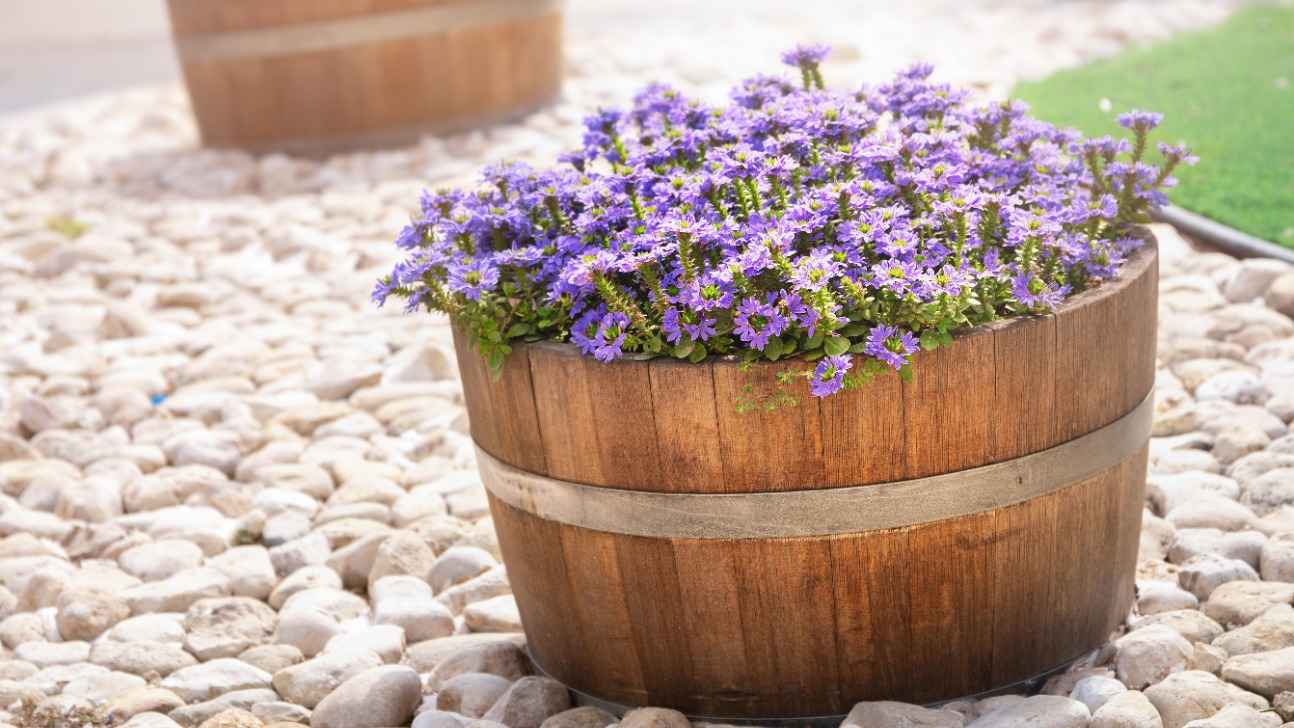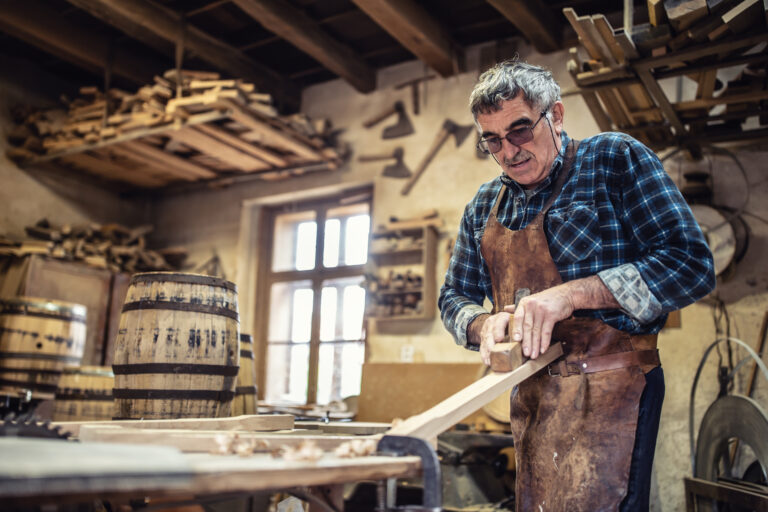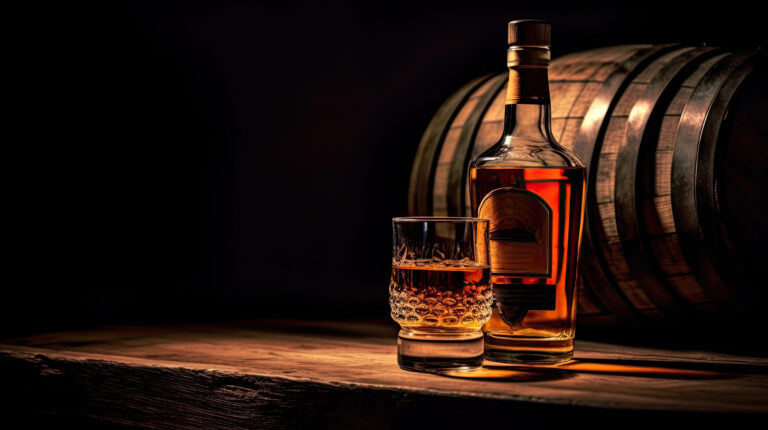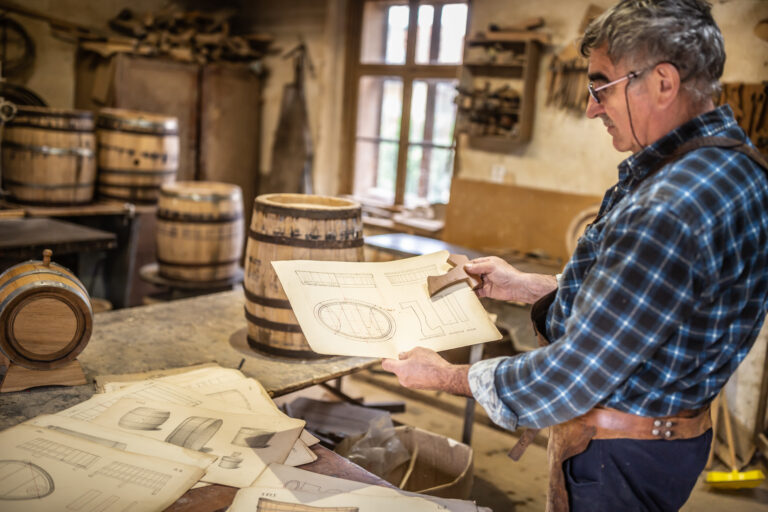Do you love the look of whiskey barrel planters but aren’t sure if they need drainage holes? As a whiskey lover and avid gardener, you appreciate the rustic charm these repurposed barrels add to your outdoor space. At the same time, you want your plants to thrive and not drown in too much moisture. The short answer is yes, whiskey barrel planters generally do need drainage holes for most plants.
While the wood of the barrels is naturally porous, allowing for some moisture loss, it typically isn’t enough for the plant roots, especially in humid weather. Without drainage holes, the excess water has nowhere to go and the roots end up sitting in soggy soil, susceptible to root rot. No one wants their beautiful blooms or delicious herbs to perish due to lack of drainage.
The good news is adding drainage holes to a whiskey barrel planter is a simple DIY project. Armed with a few basic tools, you can have holes drilled and your planter ready to go in under an hour. Your plants will thank you, and you’ll be enjoying your whiskey barrel garden for years to come.
What Are Whiskey Barrel Planters?
Whiskey barrel planters are repurposed oak barrels that once aged bourbon or whiskey. Now they hold soil and your favorite plants or herbs instead of spirits.
These rustic containers are ideal for small yards or patios since they don’t take up much space. Their rounded shape and natural wood also complement most outdoor decor styles. You can find barrel planters in a range of sizes, from petite quarter-barrels perfect for succulents to large half-barrels ideal for small trees or shrubs.
One thing to consider before using an oak barrel as a planter is drainage. Since these barrels were designed to hold liquid, they typically don’t have built-in drainage holes. Without holes for excess water to escape, plant roots can drown and rot. The simple solution is to drill several quarter-inch holes in the bottom of the barrel before adding soil and plants.
Place a saucer under the barrel to catch drips, but don’t let water pool in the saucer. As long as you provide adequate drainage, whiskey barrel planters can make a stylish home for many types of plants. Your garden will be the toast of the neighborhood!
The Appeal of Whiskey Barrels for Gardening
The appeal of repurposing whiskey barrels for planters is obvious. Those curved staves and metal hoops just look cool. And there’s something satisfying about giving an old barrel new life as a container garden.
Beyond appearances, whiskey barrels make great planters for practical reasons. They’re sturdy and built to last, so you can use them for years. The wood is oak, which naturally resists rot. And barrels are designed to hold liquid, so they’re ideal for gardening – the wood won’t warp or crack from exposure to moisture.
Whiskey barrels also provide ideal conditions for many plants. Their large volume means plenty of soil for roots to spread out and nutrients to access. And the wood helps insulate soil and roots, protecting them from extreme heat and cold.
For many gardeners, though, the best part about repurposing barrels is their rustic, homemade look. A barrel planter on your patio or porch just seems to epitomize a simple, handcrafted lifestyle. And when your garden is in full bloom, a whiskey barrel overflowing with flowers, herbs or veggies is a sight that harkens back to a simpler time. For an easy, stylish container garden, you really can’t beat the appeal of whiskey barrels.
Do Whiskey Barrels Already Have Drainage Holes?
Many whiskey barrels do not come with pre-drilled drainage holes.
Whiskey barrels are designed to hold liquid, so drainage is typically not a concern during their initial use. However, when repurposing barrels as planters, adding holes for drainage becomes important. Excess water pooling in the bottom of the barrel can drown the plant’s roots and cause root rot.
To allow for proper drainage, you’ll need to drill several holes in the bottom of the barrel. Use a spade bit and cordless drill to create 6-8 holes that are at least 1 inch in diameter. Space the holes evenly over the bottom of the barrel. Place a saucer under the barrel to catch drained water and avoid mess.
In addition to drilling holes in the bottom, you may also want to create a few holes around the sides of the barrel, especially if you’re using a barrel with a lid. Side holes will improve air circulation for the plant and prevent excess moisture buildup.
With the addition of drainage holes, your whiskey barrel planter will be ready to hold plants and make an attractive garden accent. Be sure to also fill the bottom of the barrel with gravel or stones before adding potting soil. This will prevent soil from washing out, while still allowing water to drain freely.
The Importance of Drainage Holes for Plant Health
The Importance of Drainage Holes for Plant Health
Having drainage holes in your whiskey barrel planters is critical for the health of your plants. Without holes, excess water has nowhere to go and will sit at the bottom of the barrel, drowning the roots.
- Soggy soil lacks oxygen, which plant roots need to thrive. Roots that sit in water for too long will start to rot, damaging the plant.
- Standing water also breeds disease and pests like root rot, fungus gnats, and mosquitoes. These can infest your plant and the surrounding area.
- During winter, planters without drainage holes can crack from water that has frozen and expanded. This destroys the barrel and any plant inside.
- For the best results, drill at least 4 to 6 half-inch holes in the bottom of your barrel before adding potting mix and plants. You’ll have a container garden that flourishes for years.
- If drilling holes isn’t possible, fill the bottom few inches of the barrel with gravel before adding potting mix. The gravel will create air space for drainage and prevent root rot. You’ll still need to be very careful not to overwater, though.
- An even better option is to use self-watering planters, whiskey barrel planters with built-in reservoirs, or add a pipe insert to automatically control moisture levels. Your plants will thrive and you’ll have less maintenance worries.
In the end, if there’s one tip to follow for planters of any kind, it’s this: always ensure there’s a way for excess water to drain. Your plants will reward you for it!
Should You Drill Extra Holes in Your Whiskey Barrel?
Should you drill extra holes in your whiskey barrel? Adding additional drainage to a whiskey barrel planter is a good idea for most plants. Drilling extra holes in the bottom of the barrel will allow excess water to drain away, preventing root rot.
Why add drainage?
Without proper drainage, too much moisture can build up in the soil. This deprives plant roots of oxygen and causes them to rot. By drilling extra holes in the bottom of your whiskey barrel, you’re allowing water to seep out, creating an ideal environment for your plants.
How many holes should you drill?
A good rule of thumb is to drill 5 to 10 holes evenly spaced in the bottom of the barrel. Make the holes about 1/2 inch in diameter. This should provide sufficient drainage for most plants while still allowing the barrel to retain some moisture. You can always drill more holes, but start with a moderate amount.
Do you need to elevate the barrel?
Elevating your whiskey barrel planter an inch or two off the ground will also improve drainage and airflow. You can place two or three bricks under each edge of the barrel. This allows water to drain from the holes you drilled and prevents the barrel from sitting in standing water. Elevating the barrel also allows for better air circulation which keeps plant roots healthy.
In summary, drilling extra drainage holes in the bottom of your whiskey barrel planter and elevating it slightly will help create the perfect environment for growing healthy, thriving plants. Your plants will thank you!
How Many Drainage Holes Are Needed?
How Many Drainage Holes Are Needed?
For whiskey barrel planters, drainage is key. Without drainage holes in the bottom, excess water has nowhere to go. The roots will sit in water and rot, damaging your plants.
At a Minimum, 3-5 Holes Are Recommended
A few strategically placed holes, 3 to 5 in number, in the bottom of the barrel should provide enough drainage for most plants. Space the holes evenly in a circle near the edge of the bottom. This allows water to drain from multiple sides, increasing airflow to the roots.
You can always add more holes later if you find water pooling in the bottom after watering. It’s better to start conservatively and add more drainage than to make too many holes at once. Holes that are 1/2-inch to 1-inch in diameter should work well for most barrel planters.
Consider a Drainage Layer for Extra Protection
For an extra layer of protection against root rot, you can add a layer of gravel, rocks, or drainage material in the bottom of the barrel before adding soil. This creates an air pocket for water to collect before seeping out the drainage holes. A 3- to 6-inch layer of drainage material is typically recommended.
Make sure any drainage material you add still allows for airflow and won’t compact into an impermeable layer. Perlite, pumice, lava rock, and horticultural charcoal are good options. Gravel can work too, as long as there are spaces between the pieces.
With the proper number of drainage holes and optionally a drainage layer at the bottom, your whiskey barrel planter should have sufficient drainage and airflow for most plants. Check it after the first few waterings to ensure there is no standing water—your plants will thank you!
What to Put in the Bottom of a Whiskey Barrel Planter
When using a whiskey barrel as a planter, it’s important to consider drainage. Since whiskey barrels don’t naturally have drainage holes, you’ll need to add them yourself. Here are some tips for ensuring proper drainage in your whiskey barrel planter:
Add Holes
Drill several holes in the bottom of the barrel, spacing them about 6 to 8 inches apart. Start with 5 to 10 holes around 3 to 4 inches in diameter. You can always drill more holes later if needed. The holes will allow excess water to drain from the soil.
Gravel
Add a 2 to 3 inch layer of gravel, stones or perlite to the bottom of the barrel before adding soil. The gravel will help collect and redirect the water to the drainage holes. This prevents the soil from becoming waterlogged while still retaining some moisture.
Soil
Use a well-draining potting mix instead of regular garden soil. A mix specifically for containers, like potting mix, bark and perlite will hold enough moisture for the plants but still drain well. Mix in compost or other organic matter to help with drainage and aeration.
Monitor
Check the moisture level of the soil regularly, especially for the first few weeks. You may need to make further adjustments to get the right level of drainage for your climate and the types of plants in the barrel. It’s easier to add more holes or gravel than to deal with root rot from soil that’s too wet.
With the proper additions, your whiskey barrel planter can provide the ideal environment for growing plants. The key is allowing excess water to drain away while still retaining enough moisture in the soil. By following these tips, your plants will thrive in their unique container.
Tips for Watering Plants in a Barrel Without Drainage
When watering plants in a whiskey barrel without drainage holes, less is more. Only water when the top few inches of soil are dry to avoid root rot.
Check moisture regularly
Stick your finger in the soil to check moisture levels every 3-5 days. Only water if the top 2-3 inches are dry. With no drainage, overwatering can quickly drown your plants.
Water slowly and carefully
When watering, pour water slowly and carefully over the entire surface of the soil until it starts to seep out the sides of the barrel. Stop as soon as you see water collecting at the base. Never leave your plants sitting in water.
Choose drought-tolerant plants
Opt for plants that can tolerate some dryness, such as succulents, cacti, lavender or rosemary. Their shallow root systems are well-suited for planters without drainage.
Add rocks for drainage
Place some rocks, pebbles or gravel in the bottom of the barrel before adding soil. This creates air pockets to help excess water evaporate, improving drainage. You can also drill some small holes in the bottom of the barrel and cover them with screen to allow minimal drainage.
Repot if necessary
Watch your plants closely for signs they need repotting like stunted growth or leaf drop. You may need to move them into a planter with drainage holes before root rot sets in. When repotting, choose a planter only one size up and use fresh, well-draining soil.
With the proper care and by following these tips, you can successfully grow plants in a whiskey barrel without drainage holes. The key is moderation – don’t overwater and choose plants suited to the conditions. Your plants will thank you!
Whiskey Barrel Planter Drainage FAQs
Whiskey Barrel Planter Drainage FAQs
Do whiskey barrel planters need drainage holes? In short, yes. While whiskey barrels are charming planters,
they were originally designed to hold liquid, not plants. Adding drainage holes is essential for plant health.
Without drainage, excess water has nowhere to go. The roots end up sitting in soggy soil, which can lead to root
rot, disease, and even death of your plants. Drilling several 1-inch holes in the bottom of the barrel will allow
water to drain freely. You can also add a layer of gravel to the bottom of the barrel before adding soil. This
creates air space for better drainage and aeration of the roots.
Should you line a whiskey barrel planter? Lining the inside of the barrel with landscape fabric before adding gravel
and soil is a good idea. The lining will help prevent the soil from washing out through the drainage holes. It also
keeps the barrel looking tidy by stopping small rocks and soil from showing through any cracks.
What plants work well in whiskey barrel planters? Whiskey barrels make great planters for small shrubs, bushy
plants, and cascading flowers like petunias or geraniums. Herbs, succulents, dwarf fruit trees, and flowering vines
also do well. Avoid plants with shallow root systems that require evenly moist soil. And choose plants that can
tolerate some drying out, since whiskey barrel planters typically hold less moisture.
With the right modifications and plant selections, whiskey barrels can make wonderfully rustic planters. By adding
drainage holes, gravel, and a liner, you’ll give your plants the environment they need to thrive all season long.
Final Thoughts
So there you have it, the lowdown on whether or not whiskey barrel planters need drainage holes. As with many things in life, the answer isn’t black or white. It depends on what you want to plant and your own personal preferences. If you want your barrel planter to last as long as possible and give your plants the best chance at healthy growth, drainage holes are probably your best bet. But if you prefer the rustic look of an intact barrel and are ok with the limited plant options, you can certainly get away without adding holes. The choice is yours! Whatever you decide, a whiskey barrel planter can make a great addition to your patio, garden or entryway. Happy planting!







